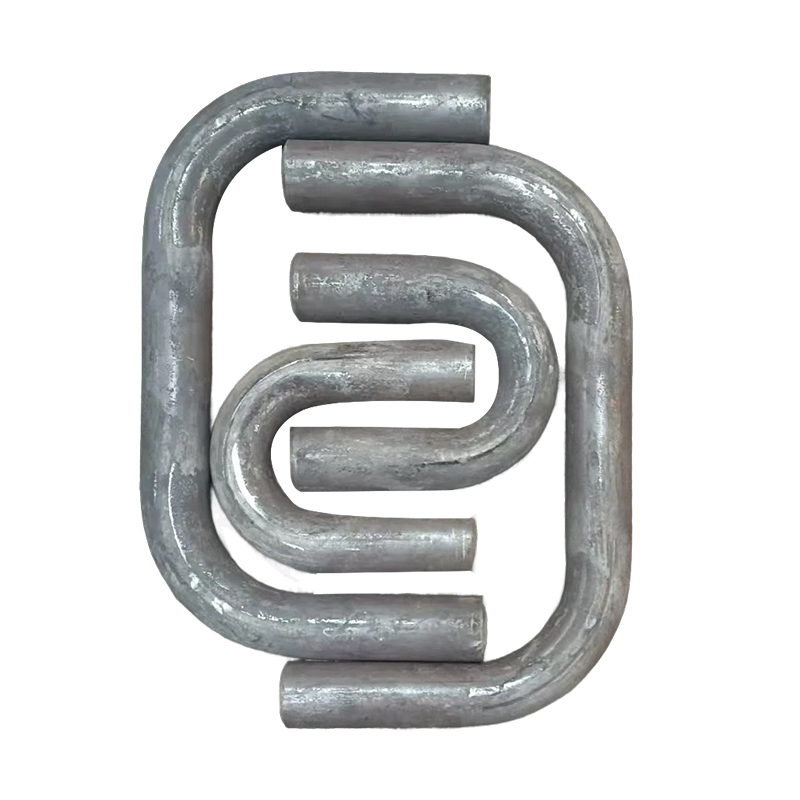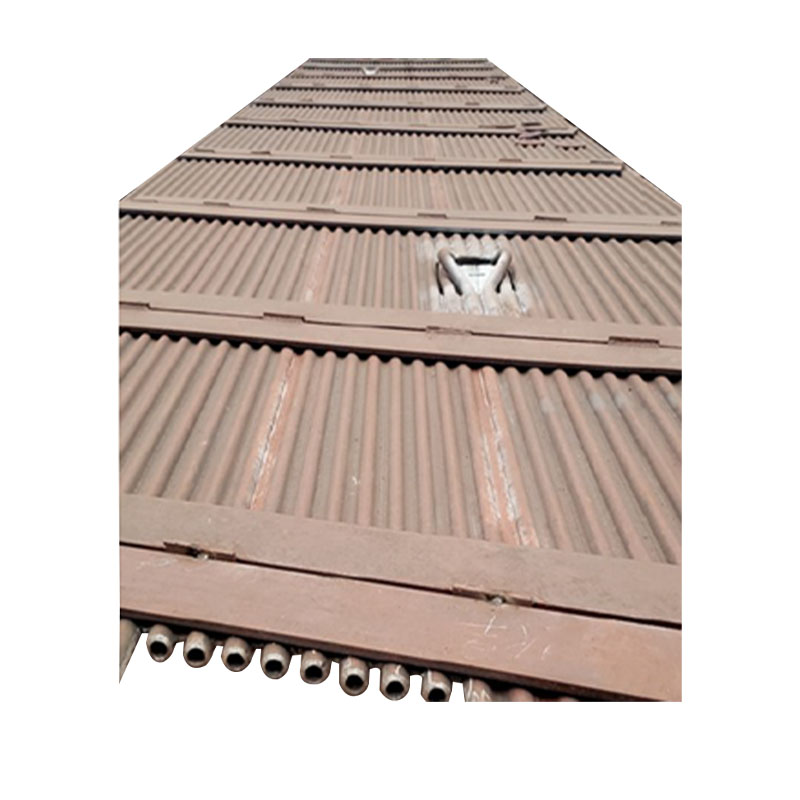Why do serpentine tube products achieve efficient heat transfer in confined spaces?
Release Time : 2025-10-23
In modern industrial and residential equipment, balancing space efficiency and heat exchange performance is a key design challenge. This is particularly true in boilers, air conditioning condensers, solar collectors, new energy vehicle battery cooling systems, and compact heat exchange equipment. Maximizing heat transfer within limited space is a constant goal for engineers. Serpentine tube products offer an ideal solution to this challenge. Their unique structural design enables efficient and stable heat transfer in confined spaces, resulting in widespread application in a variety of fields, including energy, chemical engineering, refrigeration, medical, and electronic cooling.
1. High-density tubing increases heat transfer area per unit volume
The most significant advantage of serpentine tube products lies in their "bend-and-stretch" structural feature. By continuously bending straight tubes into U-shapes or multiple-bend serpentine paths, longer pipe lengths can be installed within extremely small installation spaces. This means that, given the same volume, serpentine tube products offer a significantly greater heat transfer surface area than traditional straight or simply bent tube structures. Increasing the heat transfer area (A) is one of the most direct ways to improve heat transfer efficiency. Serpentine tube products utilize this "space folding" strategy to significantly increase the contact area between the medium and the surrounding environment, significantly improving heat transfer capacity without increasing the equipment's size.
2. Extending fluid residence time and enhancing heat exchange efficiency
In confined spaces, in addition to increasing the heat exchange area, it's also crucial to ensure that the fluid has sufficient time to exchange heat. The curved channels of serpentine tube products force the fluid to make multiple turns along the predetermined path, effectively extending its residence time within the heat exchange area. This "lengthened travel" mechanism allows high- or low-temperature media to more fully exchange heat with the surrounding environment, avoiding "short-circuiting" or "uneven heat transfer" caused by excessive flow rates. Extending contact time is particularly important for improving overall heat transfer efficiency under low-temperature gradient conditions.
3. Promoting turbulence and enhancing convective heat transfer coefficients
When fluid passes through the curved sections of serpentine tube products, centrifugal force generates secondary flow and localized vortices. This phenomenon helps break up the boundary layer, enhances mixing within the fluid, and thus improves the convective heat transfer coefficient. Compared to the laminar flow common in straight tubes, the flow within serpentine tube products tends to be more turbulent, and turbulence has stronger heat transfer capabilities. This naturally occurring "turbulence effect" passively enhances heat transfer without requiring additional energy, and is one of the key physical mechanisms behind the efficient heat transfer of serpentine tube products.
4. Compact Structure, Easier Integration and Space Adaptation
Serpentine tube products are typically formed using a continuous bending process, resulting in a compact overall structure and flexible layout, allowing for customized designs tailored to the internal space of the equipment. Whether in circular coils, rectangular arrangements, or multi-layer stacking, serpentine tube products can closely conform to the contours of the equipment, maximizing the use of corner space. For example, in the condenser of a household air conditioner, copper serpentine tube products are often combined with fins to form a compact fin-and-tube heat exchanger. In new energy vehicle battery packs, aluminum or stainless steel serpentine tubes for cooling can be placed close to the battery cells, achieving precise and uniform temperature control. This highly integrated feature makes them the preferred heat exchange structure for high-density electronic devices, mobile devices, and space-constrained environments.
5. Balancing Thermal Stress Compensation and Structural Stability
Although serpentine tube products frequently bend in confined spaces, their flexible design offers advantages. During temperature fluctuations, the tubes experience stress due to thermal expansion and contraction. The curved portion of the serpentine structure acts like a spring to absorb some of this thermal deformation, reducing mechanical loads on fixed points and connections, thereby improving system reliability and service life. Furthermore, modern manufacturing techniques ensure bending precision and uniform wall thickness, minimizing the risk of rupture due to stress concentration.
In summary, the efficient heat transfer achieved in confined spaces by serpentine tube products is due to their multiple advantages, including high heat transfer area density, extended fluid travel, induced turbulence, compact structure, and excellent thermal compensation. This innovation is not only a physical innovation but also the result of the coordinated optimization of thermodynamics, fluid mechanics, and structural engineering.
1. High-density tubing increases heat transfer area per unit volume
The most significant advantage of serpentine tube products lies in their "bend-and-stretch" structural feature. By continuously bending straight tubes into U-shapes or multiple-bend serpentine paths, longer pipe lengths can be installed within extremely small installation spaces. This means that, given the same volume, serpentine tube products offer a significantly greater heat transfer surface area than traditional straight or simply bent tube structures. Increasing the heat transfer area (A) is one of the most direct ways to improve heat transfer efficiency. Serpentine tube products utilize this "space folding" strategy to significantly increase the contact area between the medium and the surrounding environment, significantly improving heat transfer capacity without increasing the equipment's size.
2. Extending fluid residence time and enhancing heat exchange efficiency
In confined spaces, in addition to increasing the heat exchange area, it's also crucial to ensure that the fluid has sufficient time to exchange heat. The curved channels of serpentine tube products force the fluid to make multiple turns along the predetermined path, effectively extending its residence time within the heat exchange area. This "lengthened travel" mechanism allows high- or low-temperature media to more fully exchange heat with the surrounding environment, avoiding "short-circuiting" or "uneven heat transfer" caused by excessive flow rates. Extending contact time is particularly important for improving overall heat transfer efficiency under low-temperature gradient conditions.
3. Promoting turbulence and enhancing convective heat transfer coefficients
When fluid passes through the curved sections of serpentine tube products, centrifugal force generates secondary flow and localized vortices. This phenomenon helps break up the boundary layer, enhances mixing within the fluid, and thus improves the convective heat transfer coefficient. Compared to the laminar flow common in straight tubes, the flow within serpentine tube products tends to be more turbulent, and turbulence has stronger heat transfer capabilities. This naturally occurring "turbulence effect" passively enhances heat transfer without requiring additional energy, and is one of the key physical mechanisms behind the efficient heat transfer of serpentine tube products.
4. Compact Structure, Easier Integration and Space Adaptation
Serpentine tube products are typically formed using a continuous bending process, resulting in a compact overall structure and flexible layout, allowing for customized designs tailored to the internal space of the equipment. Whether in circular coils, rectangular arrangements, or multi-layer stacking, serpentine tube products can closely conform to the contours of the equipment, maximizing the use of corner space. For example, in the condenser of a household air conditioner, copper serpentine tube products are often combined with fins to form a compact fin-and-tube heat exchanger. In new energy vehicle battery packs, aluminum or stainless steel serpentine tubes for cooling can be placed close to the battery cells, achieving precise and uniform temperature control. This highly integrated feature makes them the preferred heat exchange structure for high-density electronic devices, mobile devices, and space-constrained environments.
5. Balancing Thermal Stress Compensation and Structural Stability
Although serpentine tube products frequently bend in confined spaces, their flexible design offers advantages. During temperature fluctuations, the tubes experience stress due to thermal expansion and contraction. The curved portion of the serpentine structure acts like a spring to absorb some of this thermal deformation, reducing mechanical loads on fixed points and connections, thereby improving system reliability and service life. Furthermore, modern manufacturing techniques ensure bending precision and uniform wall thickness, minimizing the risk of rupture due to stress concentration.
In summary, the efficient heat transfer achieved in confined spaces by serpentine tube products is due to their multiple advantages, including high heat transfer area density, extended fluid travel, induced turbulence, compact structure, and excellent thermal compensation. This innovation is not only a physical innovation but also the result of the coordinated optimization of thermodynamics, fluid mechanics, and structural engineering.







